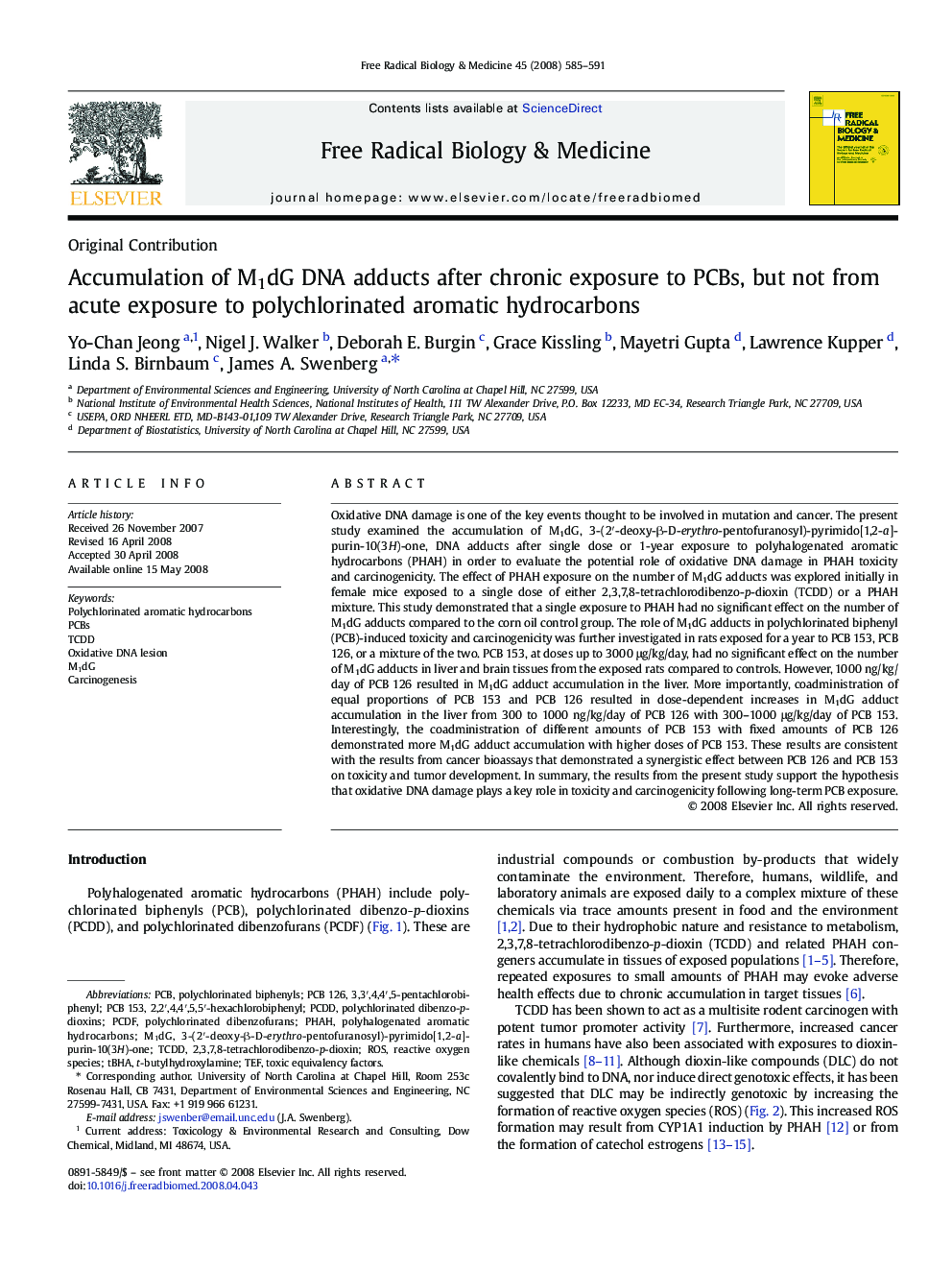| کد مقاله | کد نشریه | سال انتشار | مقاله انگلیسی | نسخه تمام متن |
|---|---|---|---|---|
| 1910835 | 1046789 | 2008 | 7 صفحه PDF | دانلود رایگان |

Oxidative DNA damage is one of the key events thought to be involved in mutation and cancer. The present study examined the accumulation of M1dG, 3-(2′-deoxy-β-D-erythro-pentofuranosyl)-pyrimido[1,2-a]-purin-10(3H)-one, DNA adducts after single dose or 1-year exposure to polyhalogenated aromatic hydrocarbons (PHAH) in order to evaluate the potential role of oxidative DNA damage in PHAH toxicity and carcinogenicity. The effect of PHAH exposure on the number of M1dG adducts was explored initially in female mice exposed to a single dose of either 2,3,7,8-tetrachlorodibenzo-p-dioxin (TCDD) or a PHAH mixture. This study demonstrated that a single exposure to PHAH had no significant effect on the number of M1dG adducts compared to the corn oil control group. The role of M1dG adducts in polychlorinated biphenyl (PCB)-induced toxicity and carcinogenicity was further investigated in rats exposed for a year to PCB 153, PCB 126, or a mixture of the two. PCB 153, at doses up to 3000 μg/kg/day, had no significant effect on the number of M1dG adducts in liver and brain tissues from the exposed rats compared to controls. However, 1000 ng/kg/day of PCB 126 resulted in M1dG adduct accumulation in the liver. More importantly, coadministration of equal proportions of PCB 153 and PCB 126 resulted in dose-dependent increases in M1dG adduct accumulation in the liver from 300 to 1000 ng/kg/day of PCB 126 with 300–1000 μg/kg/day of PCB 153. Interestingly, the coadministration of different amounts of PCB 153 with fixed amounts of PCB 126 demonstrated more M1dG adduct accumulation with higher doses of PCB 153. These results are consistent with the results from cancer bioassays that demonstrated a synergistic effect between PCB 126 and PCB 153 on toxicity and tumor development. In summary, the results from the present study support the hypothesis that oxidative DNA damage plays a key role in toxicity and carcinogenicity following long-term PCB exposure.
Journal: Free Radical Biology and Medicine - Volume 45, Issue 5, 1 September 2008, Pages 585–591